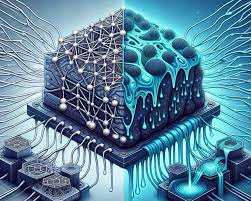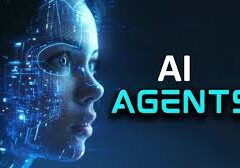Liquid Neural Networks (LNNs): Can AI Emulate the Flexibility of the Human Brain?
Artificial intelligence (AI) continues to surge forward, yet it remains constrained by its reliance on vast datasets and computational power. While modern AI systems require billions of parameters to function, even a simple organism like the 1mm C. elegans worm—boasting just 302 neurons—can independently navigate its environment. Now, a groundbreaking AI model, Liquid Neural Networks (LNNs), is emerging, inspired by biology and aiming for similar efficiency and adaptability as found in natural systems.
Inspiration from Nature: Building on Biological Intelligence
LNNs mark a significant departure from traditional, rigid AI structures, drawing deeply from the adaptable nature of biological neural systems. MIT researchers explored how organisms manage complex decision-making and dynamic responses with minimal neurons, translating these principles into the design of LNNs. Similar to how biological neurons continuously adjust and adapt to stimuli, LNNs integrate neurobiological principles, allowing them to emulate this dynamic, evolving behavior by modeling network states over time.
A Shift from Static to Adaptive AI
Traditional neural networks rely on fixed weights and activation functions, limiting flexibility once trained. In contrast, LNNs have adaptive weights and functions that evolve in real-time based on incoming data. This enables them to manage sequential data more efficiently, adjusting continuously and responding fluidly to new inputs. Such adaptability makes LNNs well-suited for scenarios where real-time processing and long-term dependencies are crucial, such as autonomous vehicles or complex time-series data in financial markets.
Unlocking Interpretability Through Causal Reasoning
One of the most exciting aspects of LNNs is their potential for transparency. Unlike conventional neural networks, which often operate as “black boxes,” LNNs can incorporate causal reasoning directly into their structure. By embedding causal models, LNNs provide insights into the decision-making process, which can be essential in high-stakes fields like healthcare, finance, and legal applications. Understanding why an AI reached a specific conclusion can build trust, facilitate collaboration, and help detect biases or errors, creating a more interpretable, accountable AI.
Efficiency and Compactness: Doing More with Less
LNNs also challenge the norm of resource-intensive AI. While traditional networks may require billions of parameters, LNNs achieve comparable performance with significantly fewer neurons. This is possible because each neuron in an LNN encodes richer, more nuanced information, mirroring biological systems’ efficiency. This compactness makes LNNs not only energy-efficient but also ideal for deployment on devices with limited resources, like IoT and edge computing platforms, allowing AI to function in environments previously out of reach.
Applications and Potential of LNNs
LNNs could transform many fields, especially those relying on time-series data, such as finance, where they might improve trading strategies and risk assessment by modeling data patterns more accurately. In natural language processing, LNNs can capture speech and text nuances better than current models, potentially advancing conversational AI and machine translation. Additionally, LNNs offer solutions for irregularly sampled data and extrapolating beyond training sets, areas where conventional models often struggle.
Overcoming Challenges on the Path Forward
While promising, LNNs face challenges in their complexity. Their reliance on differential equations and dynamic systems requires interdisciplinary expertise and could demand new training methods beyond traditional approaches. Yet as demand grows for AI that is adaptable, interpretable, and efficient, the motivation to overcome these challenges only strengthens.
Liquid Neural Networks bring a revolutionary approach to AI, merging the depth of deep learning with the interpretability and adaptability found in nature. By emulating biological intelligence, LNNs could unlock new potential across a wide array of applications, setting the stage for AI that is not only powerful but also efficient, transparent, and capable of evolving with the world around it.
🔔🔔 Follow us on LinkedIn 🔔🔔













